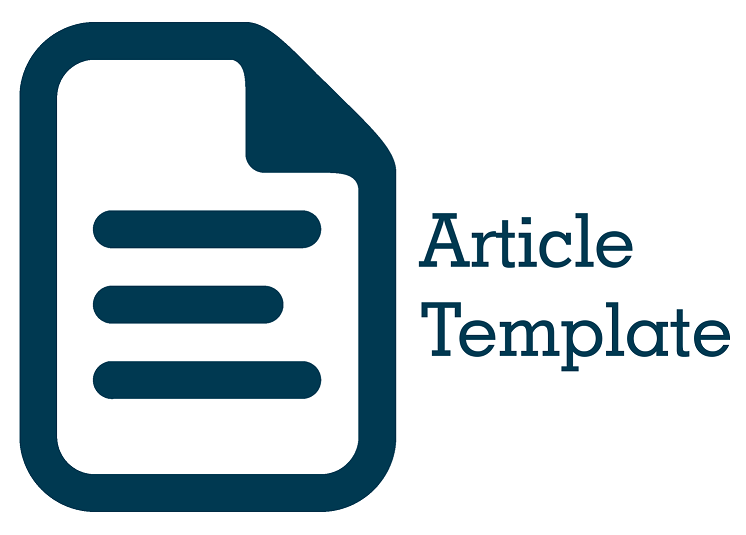Evaluating Inclusive EFL Instruction for Visually Impaired Students in Beninese Secondary Schools
DOI:
https://doi.org/10.22515/elereviews.v4i2.9661Keywords:
English as a Foreign Language (EFL), assessment, visually impaired learners, able-bodied learnersAbstract
Teaching English as a Foreign Language (TEFL) in an inclusive classroom with visually impaired and able-bodied students presents unique challenges. In particular, appropriate teaching and assessment strategies are critical in ensuring equitable education. This mixed-methods study, conducted at CEG2 Abomey in the Zou Region of Benin, aimed to develop an effective pedagogical approach to address these challenges. The research involved 200 students (57 visually impaired and 143 sighted) and seven teachers. Quantitative data were gathered through questionnaires, while qualitative data were collected through focus group discussions and classroom observations. Using descriptive statistical analysis and inductive method, the study identified a pressing need for reliable and objective assessment methods and teaching strategies to support visually impaired and sighted students. Despite these findings, the study anticipates potential challenges in implementing such approaches. Recommendations and suggestions have been made to address these difficulties and enhance TEFL education in inclusive classrooms.
Downloads
References
Agesa, L. (2014). Challenges faced by learners with visual impairments in inclusive setting in Trans-Nzoia County. Journal of Education and Practice, 5(29), 185-192. https://doi.org/10.7176/JEP/5-29-23
Aslantaş, T. K. (2017). Foreign language education of visually impaired individuals: A review of pervasive studies. Ihlara Journal Educational Research, 2(2), 95-104. https://doi.org/10.29228/ihead.373505
Başaran, S. (2012). Teaching English to visually impaired students in Turkey: A case study. Energy Education Science and Technology Part B: Social and Educational Studies, 2, 217-226. https://doi.org/10.1016/j.sbspro.2012.06.123
Boltenkova, J., Nevolina, A., Koksharov, V., Li, S., Rasskazova, T., Tkachuk, G., & Baliasov, A. (2020). Teaching EFL to blind and visually impaired students: An overview. In ICERI2020 Proceedings, 5616-5623. https://doi.org/10.21125/iceri.2020.1209
Boza-Chua, A., Gabriel-Gonzales, K., & Andrade-Arenas, L. (2021). Inclusive education: Implementation of a mobile application for blind students. International Journal of Advanced Computer Science and Applications, 12(11), 785-795. https://doi.org/10.14569/IJACSA.2021.0121189
Braun, V., & Clarke, V. (2006). Using thematic analysis in psychology. Qualitative Research in Psychology, 3(2), 77-101. https://doi.org/10.1191/1478088706qp063oa
Bryman, A. (2016). Social research methods (5th ed.). Oxford University Press.
CAST (2024). The UDL guidelines. http://udlguidelines.cast.org
Cohen, L., Manion, L., & Morrison, K. (2018). Research methods in education (8th ed.). Routledge. https://doi.org/10.4324/9781315456539
Creswell, J. W., & Creswell, J. D. (2017). Research design: Qualitative, quantitative, and mixed methods approaches (5th ed.). Sage Publications.
Forlin, C., Loreman, T., Sharma, U., & Earle, C. (2009). Demographic differences in changing pre‐service teachers’ attitudes, sentiments and concerns about inclusive education. International Journal of Inclusive Education, 13(2), 195-209. https://doi.org/10.1080/13603110701365356
Gardner, H. E. (1983). Frames of mind: The theory of multiple intelligences. Basic Books.
Gardner, H. E. (2011). Frames of mind: The theory of multiple intelligences (10th ed.). Basic Books.
Hugo, V. (1882). Les quatre vents de l’esprit, (Vol. 3). Hetzel-Quantin.
Ishaq, K., Rosdi, F., Zin, N. A. M., & Abid, A. (2020). Usability and design issues of mobile-assisted language learning application. International Journal of Advanced Computer Science and Applications, 11(6), 86-94. https://doi.org/10.14569/IJACSA.2020.0110611
Kocyigit, N., & Artar, P. S. (2015). A challenge: Teaching English to visually-impaired learners. Procedia - Social and Behavioral Sciences, 199, 689-694. https://doi.org/10.1016/j.sbspro.2015.07.599
Kormos, J., & Kontra, E. H. (Eds.). (2008). Language learners with special needs: An international perspective. Multilingual Matters.
Krashen, S. D. (1982). Principles and practice in second language acquisition. Pergamon Press Inc.
Lõvi, M. (2013). Aspects of teaching and learning English as a foreign language in the case of blind and visually impaired learners in Estonia. [Unpublished master’s thesis]. University of Tartu.
Lu, J., Jiang, H., & Huang, Y. (2022). Inclusive EFL teaching for young students with special needs: A case in China. Children, 9(5), 749. https://doi.org/10.3390/children9050749
Mason, R., Munn-Rivard, L., & Walker, J. (2021). The United Nations convention on the rights of persons with disabilities: An overview. Library of Parliament.
Morgan, D. L. (1997). Focus groups as qualitative research (2nd ed.). Sage Publications.
Musengi, M., & Chireshe, R. (2012). Inclusion of deaf students in mainstream rural primary schools in Zimbabwe: Challenges and opportunities. Studies of Tribes and Tribals, 10(2), 107-116. https://doi.org/10.1080/0972639X.2012.11886648
Nikolov, M., & Timpe-Laughlin, V. (2021). Assessing young learners’ foreign language abilities. Language Teaching, 54(1), 1-37. https://doi.org/10.1017/S0261444820000294
Orsini‐Jones, M., Courtney, K., & Dickinson, A. (2005). Supporting foreign language learning for a blind student: A case study from Coventry University. Support for Learning, 20(3), 146-152. https://sci-hub.se/10.1111/j.0268-2141.2005.00379.x
Pokrivčáková, S. (2015). Teaching foreign languages to learners with special educational needs in Slovakia. Teaching Foreign Languages to Learners with Special Educational Needs, 7-28. https://doi.org/10.17846/SEN.2015.7-28
Republic of Benin. (2017). Loi N° 2017-06 du 29 septembre 2017 portant protection et promotion des droits des personnes handicapées en République du Bénin. SGG Secretariat General Du Gouvernement. https://sgg.gouv.bj/doc/loi-2017-06/
Robles, H., Perez, A., Villalba, K., Delgado-Cañas, M. C., Villanueva, E., Keogh, C., & Jimeno, M. (2024). Language learning apps for visually impaired users: A systematic review. Research & Practice in Technology Enhanced Learning, 19(12), 1-31. https://doi.org/10.58459/rptel.2024.19012
Sharma, U., Loreman, T., & Forlin, C. (2012). Measuring teacher efficacy to implement inclusive practices. Journal of Research in Special Educational Needs, 12(1), 12-21. https://doi.org/10.1111/j.1471-3802.2011.01200.x
Susanto, S., & Nanda, D. S. (2018). Teaching and learning English for visually impaired students: An ethnographic case study. English Review: Journal of English Education, 7(1), 83-92. https://doi.org/10.25134/ERJEE.V7I1.1530
Tomlinson, C. A. (2001). How to differentiate instruction in mixed-ability classrooms (2nd ed.). Association for Supervision and Curriculum Development (ASCD).
United Nations. (2006). Convention on the Rights of Persons with Disabilities (CRPD). Nations Digital Library. https://digitallibrary.un.org/record/587763?v=pdf
United Nations. (2015). Transforming our world: The 2030 agenda for sustainable development. United Nations Digital Library. https://digitallibrary.un.org/record/3923923?v=pdf
Vygotsky, L. S., & Cole, M. (1978). Mind in society: Development of higher psychological processes. Harvard University Press.
Zigler, R., Sellah, L., Vincent, M., Vivian, J., Brown, K., & Bernadette, N. (2017). Situational analysis and development of inclusive education in Kenya and Tanzania. The Journal of the International Association of Special Education, 17(1), 11-26. https://doi.org/10.13140/RG.2.1.1117.9288
Downloads
Published
How to Cite
Issue
Section
Citation Check
License
Copyright (c) 2024 Coffi Martinien Zounhin Toboula, Azoua Mathias Hounnou, Bidossessi Moïse Videkon

This work is licensed under a Creative Commons Attribution-NonCommercial 4.0 International License.
Authors retain copyright and grant the journal right of first publication with the work simultaneously licensed under a Creative Commons Attribution License that allows others to share the work with an acknowledgement of the work's authorship and initial publication in this journal.
This ejournal system and its contents are licensed under
a Creative Commons Attribution-NonCommercial 4.0 International License








